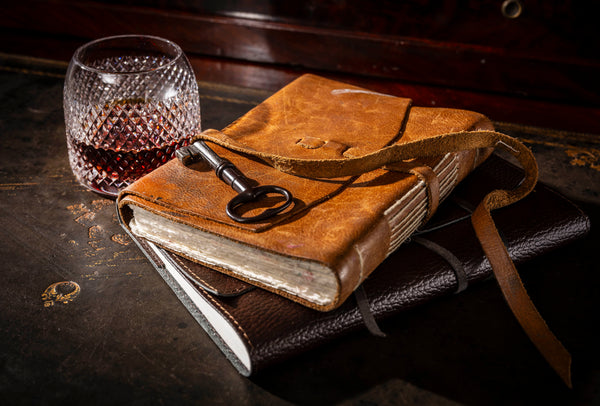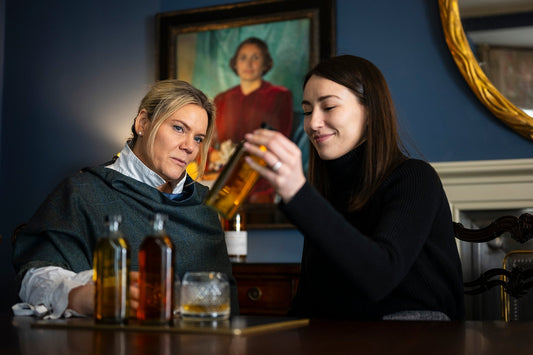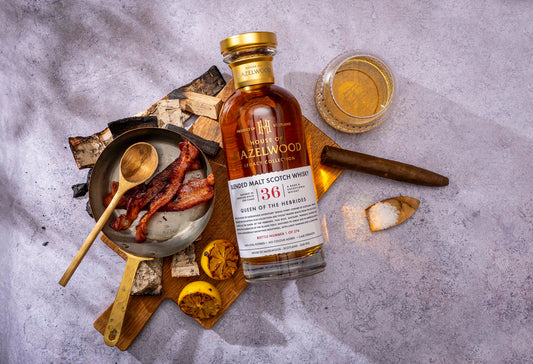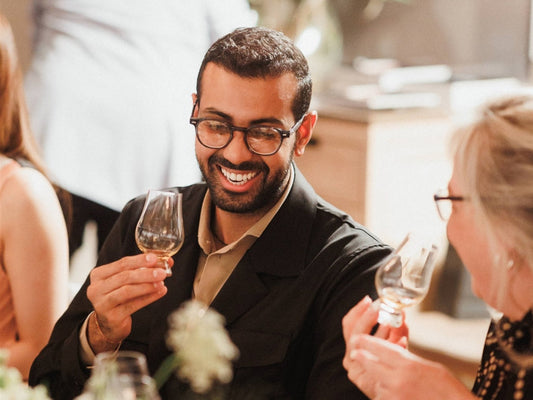For almost 100 years, the Gordon family has been laying down casks for special occasions and personal consumption, culminating in the House of Hazelwood – an extraordinary collection of aged Scotch Whisky. But how did it all begin and how did the ambition of several lifetimes amass such a collection of truly rare whisky?
We begin our journey in the rural, vast plains of The Cabrach: a remote, sparsely populated community in the depths of Moray, Northeast Scotland – a land spanning a breadth of 56,000 acres of moorland and deer forest. Once a bustling farming community of 1,000, less than 100 residents remain today, with swathes of the population decimated by the effects of World War I.
Described by many as a fragile environment, the remote nature of the land was once considered a hotbed for illicit whisky distilling between the 1700 and 1800s. Perhaps it comes as no surprise that due to this colourful history, community ties to whisky are strong, and survive today.
The First Generation - Humble Beginnings in Remote Lands
In the midst of the 19th century, it was here, in this remote plateau, a serendipitous meeting between Mr Gordon of Reekimlane (of the Cabrach) and William Grant would trigger in motion a series of events leading to the creation of the House of Hazelwood.
William Grant, a bookkeeper for a local lime merchant, was on a journey throughout the countryside, tasked with the collection of accounts due from customers located throughout the Scottish Highlands. Fuelled by an ambition to form a business of his own, his interest in limeworks motivated his travels throughout Scotland, making the most of the opportunity under the guise of company business, in the hopes of identifying a suitable site to start his own venture.
An upstanding and trusted employee, Grant would handle significant amounts of cash, travelling by horse as part of his professional remit. On this occasion, Grant opted to take a shortcut through the remote plains of the Cabrach, where he was caught in a “blind” blizzard – that is, an intense snowstorm. During this storm, he fortuitously stumbled into Mr. Gordon.
This chance meeting would lead to Grant and Gordon travelling together – it was said they enjoyed each other’s company – starting a friendship which would see many glasses of whisky enjoyed together.
Little did they realise that this chance meeting would lead to the marriage of their two families and set in motion events which would lead to the rise of an industry-leading whisky producer.
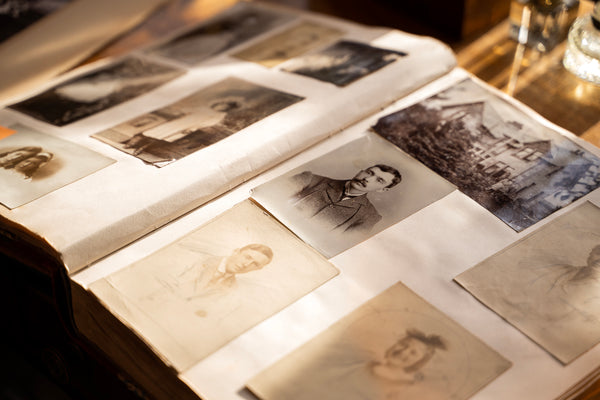
The Second and Third Generations - A Marriage of Two Families
By the end of the 19th century, introductions between Mr. Gordon’s son, known by the name of Charles Gordon and William Grant’s eldest daughter, Isabella, led to marriage, with Isabella assuming the identity of Mrs. Gordon.
Charles Gordon’s ties to the Cabrach were strong as a resident schoolteacher, but marriage saw Charles leave the ancestral home of Reekimlane, to become heavily involved in William Grant’s family whisky business. By 1903, Charles Gordon was appointed as a director, alongside other Grant family members with the incorporation of the company.
Charles, alongside his brother-in-law, shortly thereafter assumes the role of the company’s first salesman, travelling the world at a dynamic rate, exploring the lands of Scandinavia, Asia, and North America.
Sadly, Charles dies young, leaving in his wake his only son, William Grant Gordon, who is also in the company. Succession leads to Willian Grant Gordon assuming the role of Chairman in 1936, a period of great turbulence for whisky with the challenges of The Great Depression and prohibition in the United States. Despite other producers scaling back operations, Grant Gordon channels the family trait of entrepreneurial spirit, increasing production with the intent of building a whisky inventory to support future generations – a wise move, with World War II on the horizon. During this period, William Grant Gordon marries Dr. Janet Grant, and together they raised their own children, Charles and Alexander “Sandy” Gordon.

The Fourth Generation – Production in a Post War World
With the 1950s, came the induction of the fourth generation of family joining the company. In a world reeling from the human and economic cost of World War II, there was huge appetite across the United Kingdom to speed up financial recovery through the export of the immensely profitable Scotch Whisky.
Despite a grain shortage following the war, market conditions were ideal for the rapid growth of the Scotch Whisky industry, and for William Grant Gordon and the company, production assets and stocks had remained relatively unscathed.
Legal developments also aided ideal market conditions with the abolishment of prohibition in distillation on a Sunday, as well as the introduction of the Regulation of Spirits Act, freeing producers to ferment and distil at once, opening the opportunity to double production.
Geographically, demand from international markets was also at an all-time high – following the prohibition of the 1920s-30s in the United States, the alcohol industry was in the stages of infancy, and where Irish Whisky was concerned, with a total of just six distilleries, fulfilling demand at this scale was simply not possible. In short, Scotch had an advantageous monopoly.
1951 sees son Charles Gordon join the family company, having paid his dues in experience across the wider industry as a Maltster, working at North British grain distillery and at the time, DCL-owned distillery, Linkwood. Just two short years later comes the untimely death of William Grant Gordon, leaving both Charles and Sandy to step up and drive the innovation.
The passing of William Grant Gordon would ultimately act as the lynchpin for Charles and Sandy Gordon to become pioneers of the industry, assuming the mindset of achieving full independence, stepping away from third party grain suppliers and external contractors for production, and instead focusing on a drive towards self-sufficiency – a move that would ultimately see the creation of Girvan Grain Distillery and the implementation of Scotland’s only in-house copperworks.
It perhaps comes as no surprise that with such a voracious drive to be entrepreneurial, fuelled by an appetite to futureproof the company’s inventory, that the brothers during this time obtained new make spirit from Scotch producers from out with the family company, and thus began the act of laying down extensive private family reserves destined to become the abundant, yet extraordinary, collection available today as the House of Hazelwood.
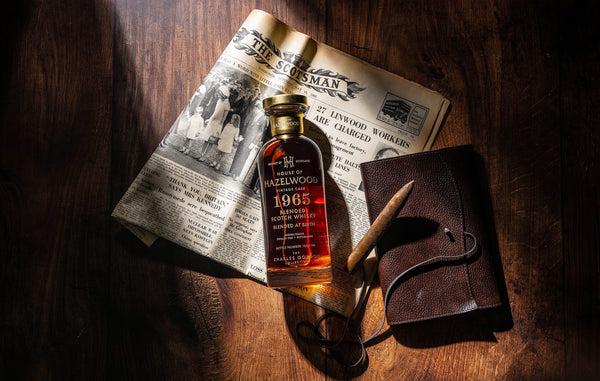
What’s in a name?
Today, the House of Hazelwood is guided by the watchful eye of the fifth generation of Gordons, greatly influenced by Charles and Sandy’s time at the helm. In 2022, the private family stocks amassed to a point that it was no longer possible for the family to consume this incredible, rare, and extremely well-aged whisky, and as such with so many casks coming to the point of optimum maturation, the House of Hazelwood was opened to share with whisky enthusiasts for the first time.
But where does the name “Hazelwood” come from?
Following Charles Gordon’s all-too-soon passing, his widow, Isabella Gordon moved into the beloved family residence known as Hazelwood House, and remained there for decades, playing host to fond family members passing through, with some spending the duration of their summer holidays. The house today remains within the family, and as such the House of Hazelwood collection was named in honour of this.
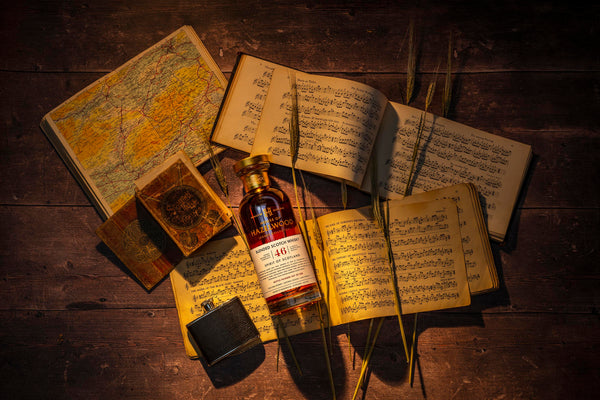
Within the collection, you can find tributes to the family– such as The Charles Gordon range, named eponymously due to his personal connection to the expressions associated with the name. The Legacy Collection, representative of the pioneering and experimental nature of Charles and Sandy Gordon.
Of course, there are many more tales that could be told of the life and times of the Gordon brothers, and the 4th generation family, but for now, we can remain content, raising a glass of a rare and aged whisky from the House of Hazelwood, toasting the foresight they had.
